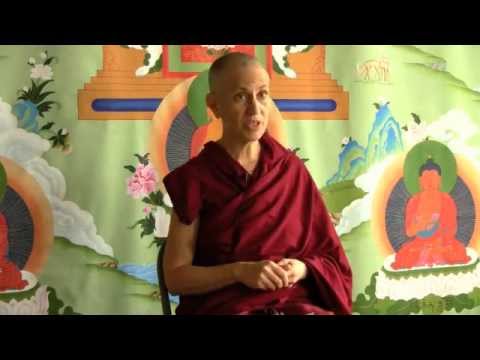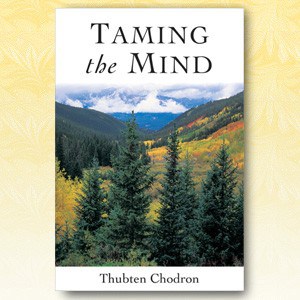Unique features of tantra
Let’s continue with the discussion on tantra. I wanted to clear up [something] from yesterday. Usually when we talk about the three vehicles, it refers to hearer vehicle, solitary realizer vehicle, bodhisattva vehicle. In that schema, the fundamental vehicle teachings correspond with the hearer and solitary realizer, and the Mahayana is the bodhisattva vehicle, and the Vajrayana is a type of Mahayana teaching.
One of the special things in tantra is a practice called deity yoga. That is when you unite yourself with the deity. You begin by taking refuge, generating bodhicitta, creating merit and doing purification. All these preliminary teachings and understandings and practices are also incorporated into a tantric practice. Then at a certain point in the tantric practice, you dissolve yourself into emptiness. You do the meditation on emptiness. Here you can see why understanding emptiness is so important. If you don’t understand emptiness, how do you do the meditation on emptiness in the tantric sadhana? It doesn’t work.
You meditate on emptiness, and then you imagine the wisdom that understands emptiness–your own wisdom appearing in the form of the deity. You meditate on yourself as the deity, developing what’s called clear appearance and divine dignity. Clear appearance is imaging yourself as the deity and seeing that clearly. That goes into the practice of developing samatha. Divine dignity is identifying oneself as the deity, but within the sphere of oneself being empty of true existence. If you don’t understand emptiness, yet you are identifying yourself as the deity, then you’re really going to wind up with big problems because your ego is only going to increase.
The nice thing about the deity yoga practice is that by contemplating your own emptiness and imagining your wisdom appearing in the form of the deity, it really helps us to overcome what Lama Yeshe used call the poor-quality view. In other words, our usual self-image is, “You know, I’m just little old me. I can’t do anything. I’m inferior. I’m filled with shame and guilt, and blah, blah.” Clearly the deity doesn’t have that kind of self-talk and self-image, so it’s very good as an antidote for that.
The deity yoga practice helps you develop concentration. It helps you meditate further on emptiness. There are special practices within it for uniting special insight and serenity–samatha and vipassana. There are special techniques for training the mind to see the two levels of truth at the same time. This is a quality only the Buddha has, to be able to see conventional truth and ultimate truth at the same time. But in deity yoga, when you think of your own wisdom, meditating emptiness appearing as the deity, and then you meditate again on the emptiness of the deity, you are really training in that thing of something conventionally appearing, but it’s empty of true existence.
These are some of the unique features of tantra. Tantra enables one to create a lot of merit very, very quickly. The tantra practice is done with very, very strong bodhicitta, because unless you have very strong bodhicitta, then you don’t have the energy in your mind to really do all these different things. That’s why really keeping up our meditation on bodhicitta is so important.
It’s a wonderful thing to do. Tantric practice does require taking initiation beforehand. Before you take initiation, you should definitely check the qualities of the spiritual mentor giving the tantric initiation and make sure that that person is qualified. Not only that they’re qualified, but that you want to take them as one of your tantric gurus because it’s a very serious commitment that you make when you take initiation from somebody. Especially if it’s a highest class tantra initiation, you’re also taking the tantric vows and with all of the classes, you take the bodhisattva vows, so you really want to approach things in a way that’s comfortable for yourself without putting undue pressure on yourself, without jumping into things that you’re not ready to. Like I said yesterday, build a good foundation, then building the roof is not troublesome, and it works well.
Venerable Thubten Chodron
Venerable Chodron emphasizes the practical application of Buddha’s teachings in our daily lives and is especially skilled at explaining them in ways easily understood and practiced by Westerners. She is well known for her warm, humorous, and lucid teachings. She was ordained as a Buddhist nun in 1977 by Kyabje Ling Rinpoche in Dharamsala, India, and in 1986 she received bhikshuni (full) ordination in Taiwan. Read her full bio.


